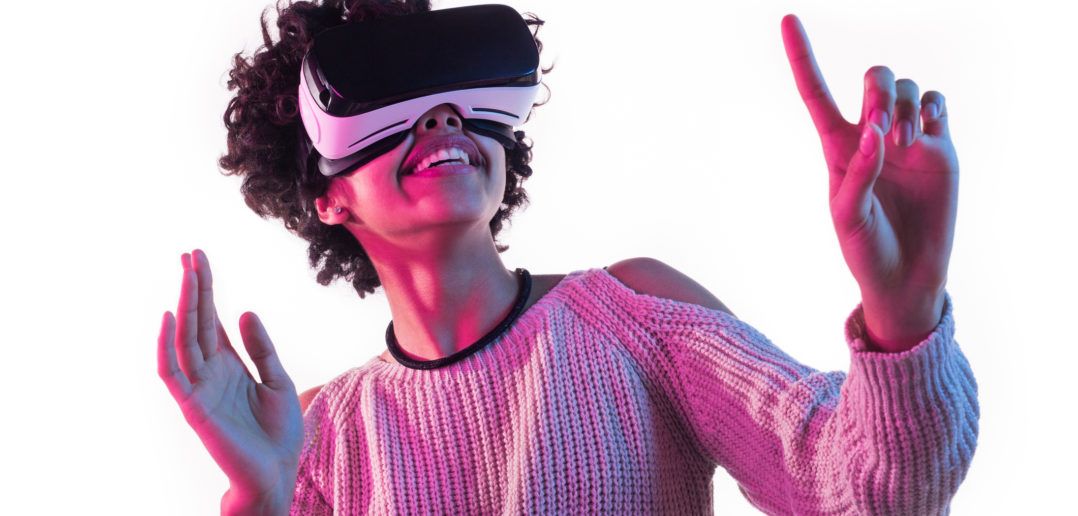This is the latest in a series of posts from leading VR and AR influencers in the run-up to MIPTV 2017. The posts are coordinated by VAST MEDIA, a Berlin-based media consultancy.
We have, and always will be storytellers, the only thing that changes are the tools at our disposal – Print, Film then Radio, followed by Television, Internet, Mobile and now Virtual Reality.
For many, the opportunity to be at the forefront of this new medium is both exciting and ever so daunting. I personally have never been more inspired by the possibilities for storytelling & tech innovation. Until Virtual Reality, audiences have watched stories unfold on the screen and now they are stepping into the screen, removing the 4th wall, and unlocking it in a way they could never have imagined possible. It’s a medium laced with much promise – and with that comes expectations, challenges and lofty ambitions.
Here are three areas, from the content side of the business, I’m focused on now.
Meeting the Demands of the Audience
The Wants vs. Needs of audiences have driven the innovations around storytelling. They have come from various areas, and often the most unlikely of places. For more than a century we’ve seen these emerge from print into radio then black and white images to color, not to mention production equipment like Jibs, Steadicams, SkyCams, and consumption of content from 16mm to 35mm, High Definition and 4K (the list goes on and on). Every one of these advancements has been about meeting the demands of the audience – “Tell me a Story” – and what’s most exciting is that Virtual Reality has the ability to meet audience demands like no other medium in history.
Most importantly we’re not talking about an incremental change to how content is consumed. VR is transformational change and (done right) is light years away from a regular flat-screen experience (like Radio was to Television). VR unlocks the screen in ways we haven’t yet discovered and those who have experienced true, fully immersive 3D VR has never thought twice about the transformational power of the technology.
Unfortunately, for this nascent industry laced with so much promise, there is a lot of content being sold as immersive that is not really Virtual Reality (or AR). Most audiences in 2017 have not experienced true VR, rather simply 2D 360 videos. For the most part, this content should never really make its way to a VR Headset. It’s a terrible experience and doesn’t speak to the power of the technology. It’s content created for flatscreen mobile video consumption (or click and drag websites, Facebook 360 and Youtube) that happens to play in an HMD and, is simply, uncomfortable for people to watch in an immersive headset. Sometimes even resulting in a feeling of motion sickness (or Simulator Sickness).
There is a plethora of this content flooding the VR “Void” as the industry awaits the arrival of “Hollywood” – professionals who know the craft, and the rules they can break. The result is a bunch of, at best, 360 video “experiences” masquerading as VR being played on dozens of low-end devices that disappoint first-time audiences. This, coupled with a bunch of independent experimental filmmaking, has resulted in poor quality content (and storytelling) that doesn’t deliver on the promise of the technology.
Delivering on the Promise of the Technology
Content creators have to stay focused on delivering on the promise of the Virtual Reality technology. The true promise of VR – creating a sense of Presence. The biggest hurdle to the sense of “Presence ” is screen resolution (or lack of). There are far too many people choosing to create VR content that is reliant on what is, at its very core, the Achilles Heel of the industry.
This is a short-term hurdle (12-18 months) as more 4K-capable phones will hit the market in the near future, making the viewing experience for virtual reality significantly better. Also, 5G connectivity will make accessing content on mobile devices easier but that dream of visual clarity is 2020 (mind the pun) at best.
This means that choosing the right VR production partner and content is incredibly important. In long form live virtual reality – such as a sports game or a music concert – quality is critical to control eye-strain issues and eye/ear/brain coordination issues, which can be cumulative over the length of a poor-quality broadcast. The bottom line is that although consumers seem ready to embrace virtual reality as an immersive, innovative new broadcasting medium the race to harvest the attention of audiences means many companies are taking short cuts. The Production Houses, Content Creators, Producers and Directors need to ensure they are delivering on the promise of the technology and not just simply shooting 360 videos and selling it as 3D VR.
The good news is that consumer awareness of VR has grown exponentially in the past year, and with that so has the Ambition of our Partners.
Ambitions of our Partners
Everyone wants in on VR – to be producing it, distributing it and monetizing it. Most unknowingly skipping one of the most debated subjects in VR, which is its similarities to established mediums. The harsh reality is that you can’t simply copy and paste traditional production/distribution and monetization techniques to VR. Understanding the VR production process is critical: What’s involved and why. To capture great VR content you need to consider the needs of a VR shoot. It can’t just be a “bolt on” experience or “Nice to have” – Great VR content can be Game Changing but more importantly average VR content is toxic. When capturing the action in virtual reality, a high-quality feeling of immersion is one of the most important considerations because the promise to audiences is that you will feel as if they are virtually there – sitting courtside or sitting front row at a concert. Quality to the audience means the content is believable, comfortable, and transfers the emotion of the experience with a sense of immersion.
Done right means VR places audiences directly in the middle of the action, like NextVR does for sports and entertainment events, giving fans multiple vantage points and offering additional features such as expert commentary, real-time graphics, and backstage access at concerts, delivering on the promise of not just VR but the Internet of Things. The front-row perspective offered through VR is something a traditionally televised broadcast just can’t produce.
In all my years in Broadcasting and Tech, I’ve never seen the reception or interest in a technology that intersects so many different industries. This is by far the most exciting, complex, challenging, and intriguing thing I have ever done in my career. We are just at the very beginning, and the next decade we will see incredible growth in the adoption of Virtual Reality. The most exciting part of what we are building? It really is just the very, very beginning.




